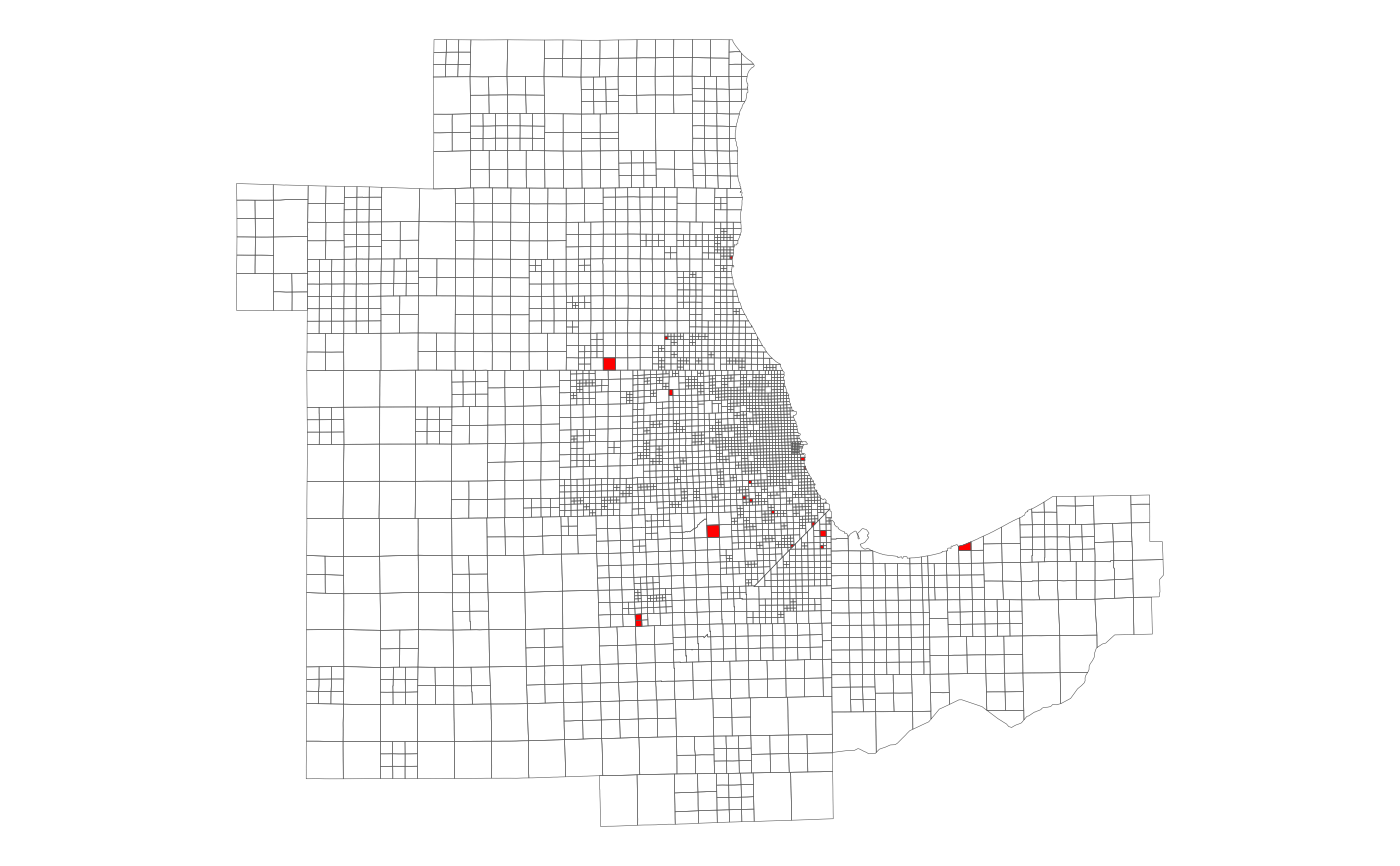This table contains a set of factors to apportion Census tract-level data
among the CMAP travel modeling zones. Separate factors are provided for
apportioning housing unit, household, and population attributes. All factors
were determined by calculating the percentage of a tract's housing units,
households and population that were located in each of its component blocks,
according to the 2020 Decennial Census, and then assigning each block to a
zone (based on the location of the block's centroid point). Zones that do not
contain the centroid of any blocks with at least one housing unit, household,
person or job are not present in this table. Use xwalk_tract2zone for
data from the 2020 decennial census or the American Community Survey (ACS)
from 2020 onward. For data from the 2010 decennial census or ACS from 2010
through 2019, use xwalk_tract2zone_2010.
xwalk_tract2zone
xwalk_tract2zone_2010Format
xwalk_tract2zone is a tibble with 7499 rows and
6 variables:
- geoid_tract
Unique 11-digit tract ID, assigned by the Census Bureau. Corresponds to
tract_sf(although that only includes the tracts in the 7-county CMAP region). Character.- zone17
Numeric zone ID. Corresponds to
zone_sf. Integer.- hu_pct
Proportion of the tract's housing units (occupied or vacant) located in the specified zone. Multiply this by a tract-level measure of a housing attribute (e.g. vacant homes) to estimate the zone's portion. Double.
- hh_pct
Proportion of the tract's households (i.e. occupied housing units) living in the specified zone. Multiply this by a tract-level measure of a household attribute (e.g. car-free households) to estimate the zone's portion. Double.
- pop_pct
Proportion of the tract's total population (including group quarters) living in the specified zone. Multiply this by a tract-level measure of a population attribute (e.g. race/ethnicity) to estimate the zone's portion. Double.
- emp_pct
Proportion of the tracts's total jobs located in the specified zone. Multiply this by a tract-level measure of an employment attribute (e.g. retail jobs) to estimate the zone's portion. Not available in
xwalk_tract2zone_2010. Double.
xwalk_tract2zone_2010 is a tibble with
6910 rows and 5
variables (no emp_pct).
Details
Other than in certain areas of Chicago, tracts tend to be larger than zones and have highly irregular boundaries, so in most cases the jobs, population, households and/or housing units in a tract are split across multiple zones. For that reason, it is not appropriate to use a one-to-one tract-to-zone assignment to apportion Census data among zones, and this crosswalk should be used instead.
To use this crosswalk effectively, Census data should be joined to it (not
vice versa, since tract IDs appear multiple times in this table). Once the
data is joined, it should be multiplied by the appropriate factor (depending
whether the data of interest is measured at the housing unit, household,
person or job level), and then the result should be summed by zone ID. If
calculating rates, this should only be done after the counts have been summed
to zone. The resulting table can then be joined to zone_sf for mapping, if
desired.
If your data is also available at the block group level, it is recommended
that you use that with xwalk_blockgroup2zone instead of the tract-level
allocation. If the zone geography is too coarse for your needs, you can use
subzones instead with xwalk_tract2subzone or xwalk_blockgroup2subzone.
Examples
# View the tract allocations for zone17 == 55
dplyr::filter(xwalk_tract2zone, zone17 == 55)
#> # A tibble: 4 × 6
#> geoid_tract zone17 hu_pct hh_pct pop_pct emp_pct
#> <chr> <int> <dbl> <dbl> <dbl> <dbl>
#> 1 17031081800 55 0.00235 0.00258 0.00431 0.0289
#> 2 17031081900 55 0.408 0.354 0.419 1
#> 3 17031838300 55 0.320 0.391 0.477 0.216
#> 4 17031842200 55 0.422 0.463 0.473 0.330
# Map the zones missing from xwalk_tract2zone (i.e. no HU/HH/pop/emp)
library(ggplot2)
ggplot(dplyr::anti_join(zone_sf, xwalk_tract2zone)) +
geom_sf(fill = "red", lwd = 0.1) +
geom_sf(data = zone_sf, fill = NA, lwd = 0.1) +
theme_void()
#> Joining with `by = join_by(zone17)`
